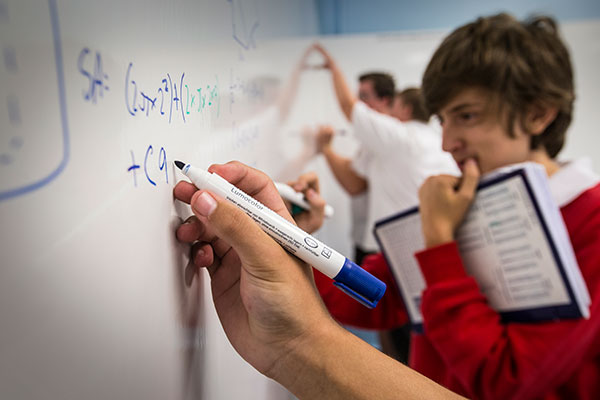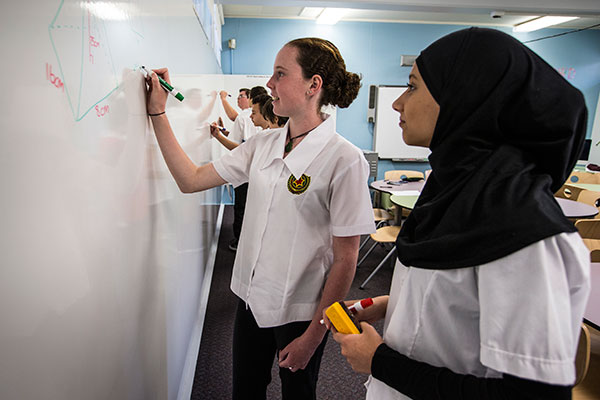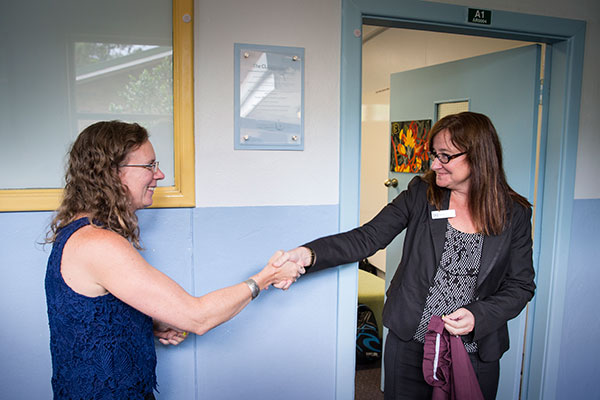March 13, 2015
Learning in the CLOWD to improve maths teaching in schools
UOW researchers launched an Illawarra-first classroom that gives high school students a hands-on experience of working like a mathematician, as part of a project to inspire the next generation of maths teachers.

The Collaborative Learning, Occupants Working Dynamically (CLOWD) room was launched at Illawarra Sports High (ISHS) on 16 March.
The CLOWD room includes an interactive whiteboard, video conferencing facilities, iPads and furniture designed to adapt to collaborative style learning. Its walls are covered in dry-erase (whiteboard) material, to encourage students to share and discuss ideas easily.
It will be helpful for the school students and to develop the skills of UOW students who are hoping to be mathematics and science teachers. The initiative is part of the ongoing Inspiring Mathematics and Science in Teacher Education (IMSITE) project, led by UOW researchers Dr Caz Sandison and Dr Tricia Forrester.

Year 10 Illawarra Sports High School students Jade Smith and Batool Khochaiche try out the CLOWD room.
It builds on the Work Like a Mathematician days and is based on the idea of giving secondary students experience in “working like a mathematician”, with the aim of improving the quality of mathematics in schools.
“The mathematical literacy of the population is in decline on the world stage with an increase in the number of countries outperforming Australia,” Dr Sandison said.
The CLOWD room will be used for demonstration, teaching and observation in the hope that students in degrees like the Bachelor of Mathematics Education and the Master of Teaching (Secondary) can get access to teaching that is dynamic and collaborative, rather than the table and textbook setup that is common to mathematics classrooms.

Dr Caz Sandison of UOW and Illawarra Sports High School principal Raechel McCarthy open the new CLOWD room.
Dr Forrester said the professional development of university students going into the industry was vital to lift the levels of mathematical literacy for the future.
“At present, 40 per cent of mathematics classes in Years 7 to 10 are taught by teachers without mathematics teaching qualifications. We need university students with skills to bridge the gap between the novice and the expert.”
While the room was developed in the aims of improving mathematical teaching and learning, it will be accessible to all ISHS teachers for lessons involving collaboration, group work and video conferencing.
Media contact
Grant Reynolds, UOW Media Communications Officer, +61 417 010 350 or grantr@uow.edu.au.